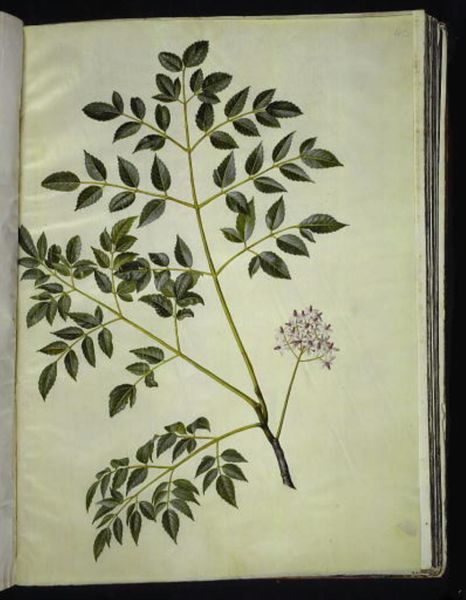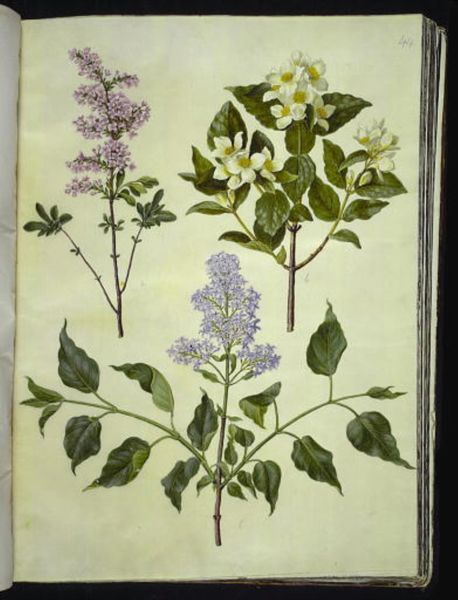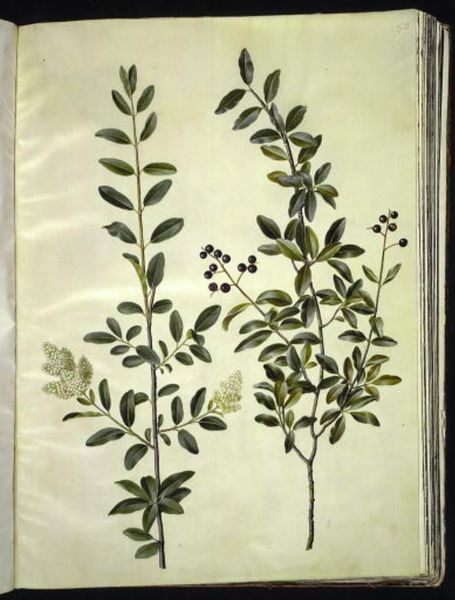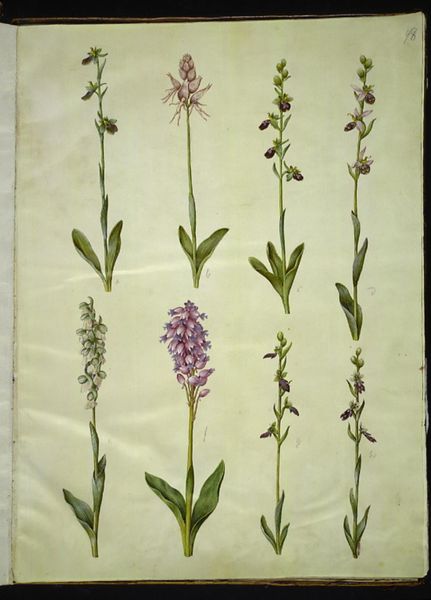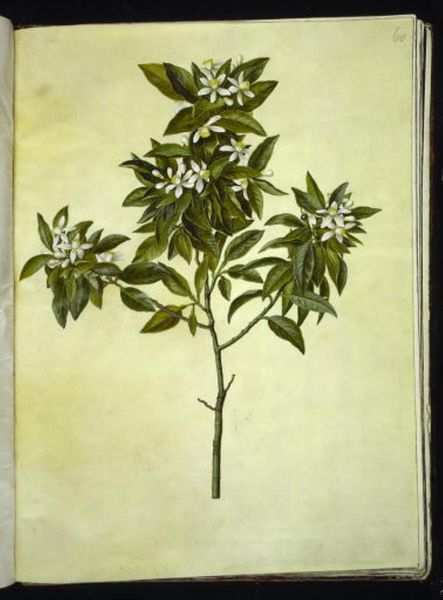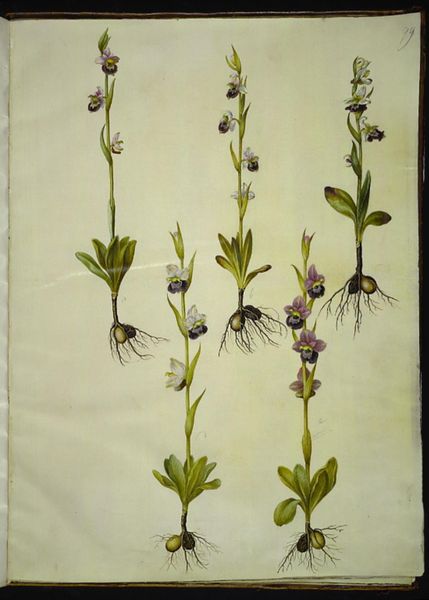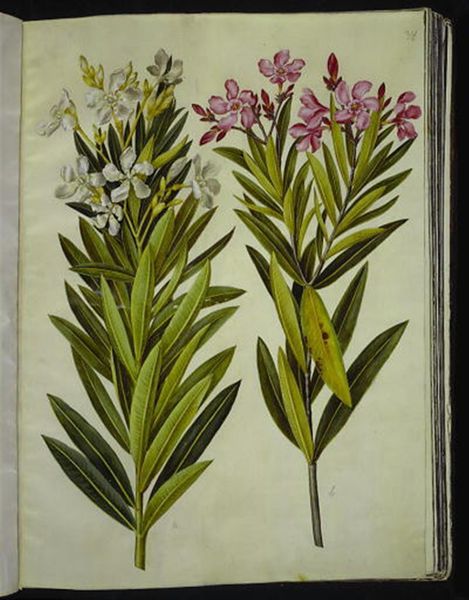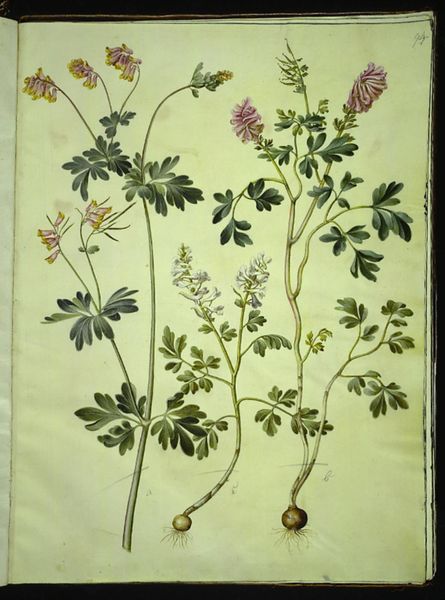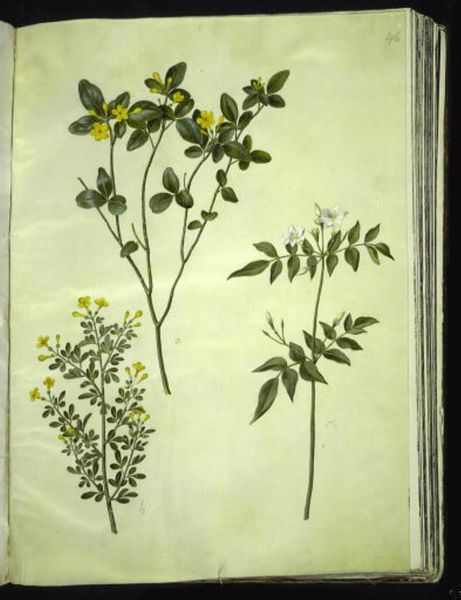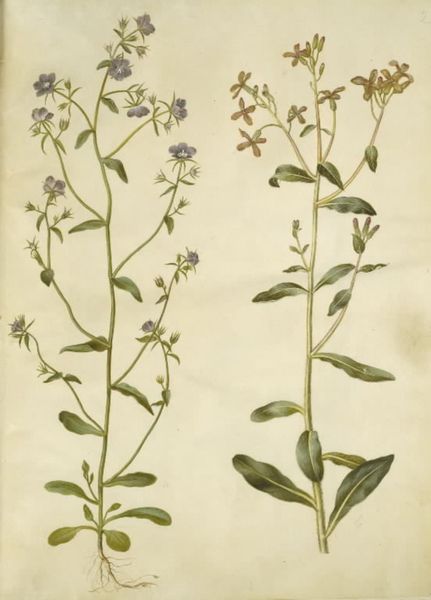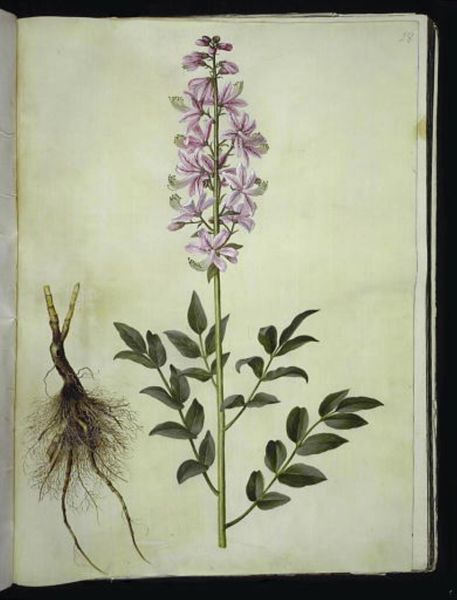
drawing, coloured-pencil, gouache, watercolor
#
drawing
#
coloured-pencil
#
gouache
#
watercolor
#
coloured pencil
#
watercolour illustration
#
botanical art
#
realism
Dimensions: 505 mm (height) x 385 mm (width) (bladmaal)
Editor: Here we have "Dictamnus albus (hvid diktam)," a drawing created between 1649 and 1659 by Hans Simon Holtzbecker. It utilizes colored pencil, gouache, and watercolor. The rendering is wonderfully delicate, but it’s also surprisingly stark, focusing as it does on a single plant against the page. What’s your take on it? Curator: The meticulous detail definitely invites contemplation, doesn’t it? But let’s consider this image through a lens that integrates botanical art and societal structures. Consider the immense importance placed on scientific classification during this period. Taxonomy, seemingly objective, emerged from deeply biased societal power structures. The drive to categorize the natural world also reveals human tendencies toward control and exploitation, specifically colonial exploitation. Editor: So, it’s not *just* a pretty flower picture? Curator: Absolutely not! Think about who had the privilege to commission, create, and consume botanical art. Largely, it was wealthy Europeans benefiting directly or indirectly from colonial enterprises. The seemingly benign image conceals power dynamics – who gets to name, classify, and ultimately, control nature and its resources? Editor: That's a perspective shift! Does the *Dictamnus albus* itself have some cultural significance? Curator: Indeed. Some believe this plant, also known as the burning bush, possesses medicinal qualities and magical protection, which are traditions often excluded from official scientific discourse. Holtzbecker renders the plant with precision, but is there also an acknowledgement here of folklore and indigenous knowledge pushed to the margins? We need to ask, whose stories are being told, and whose are being left out? Editor: This makes me see the piece totally differently. I was focused on its simple beauty, but there are whole histories embedded here. Curator: Exactly. It’s about critically interrogating even the most seemingly straightforward images to unearth their connections to broader societal issues, asking questions about access, privilege, and power.
Comments
No comments
Be the first to comment and join the conversation on the ultimate creative platform.
